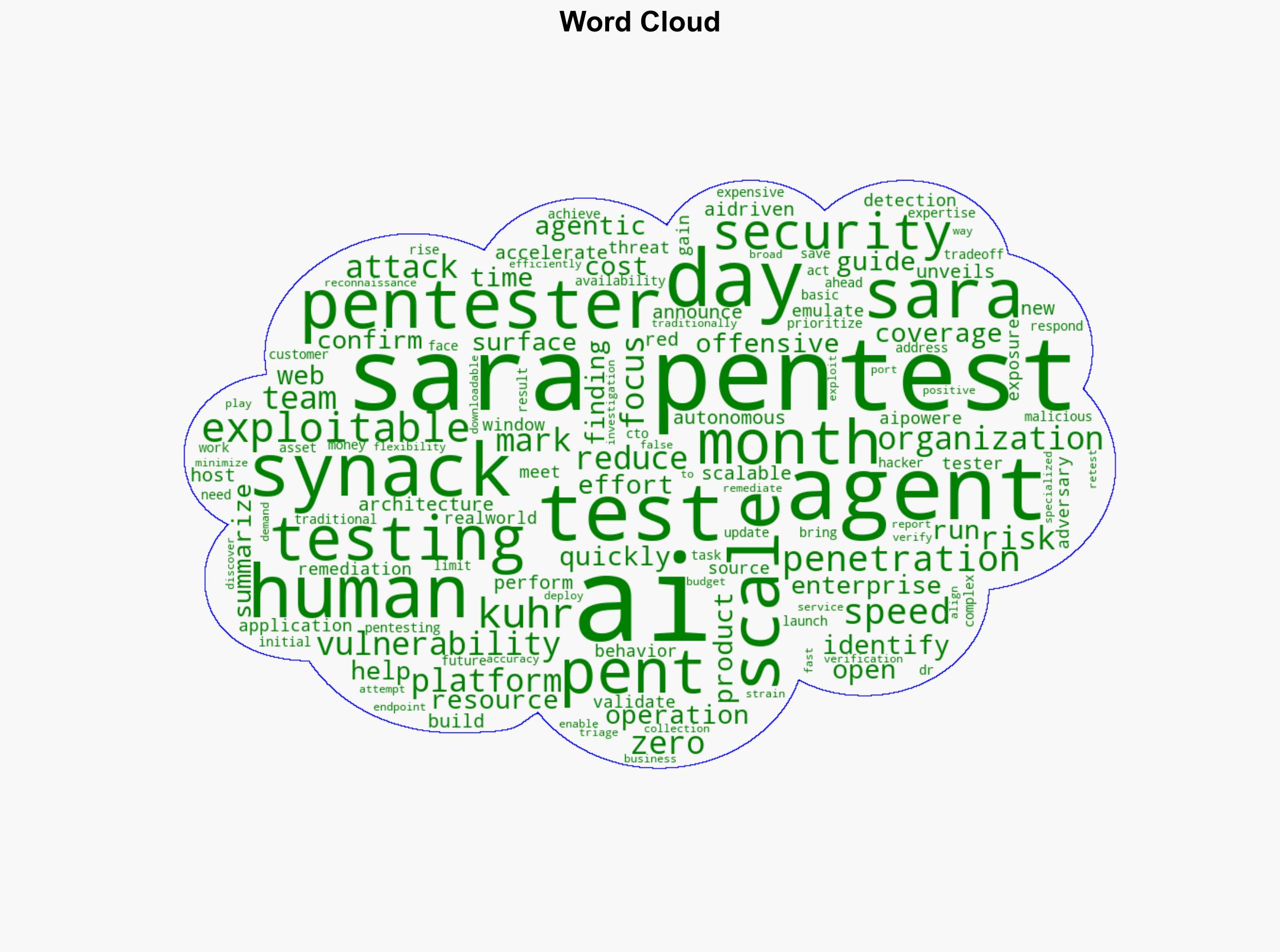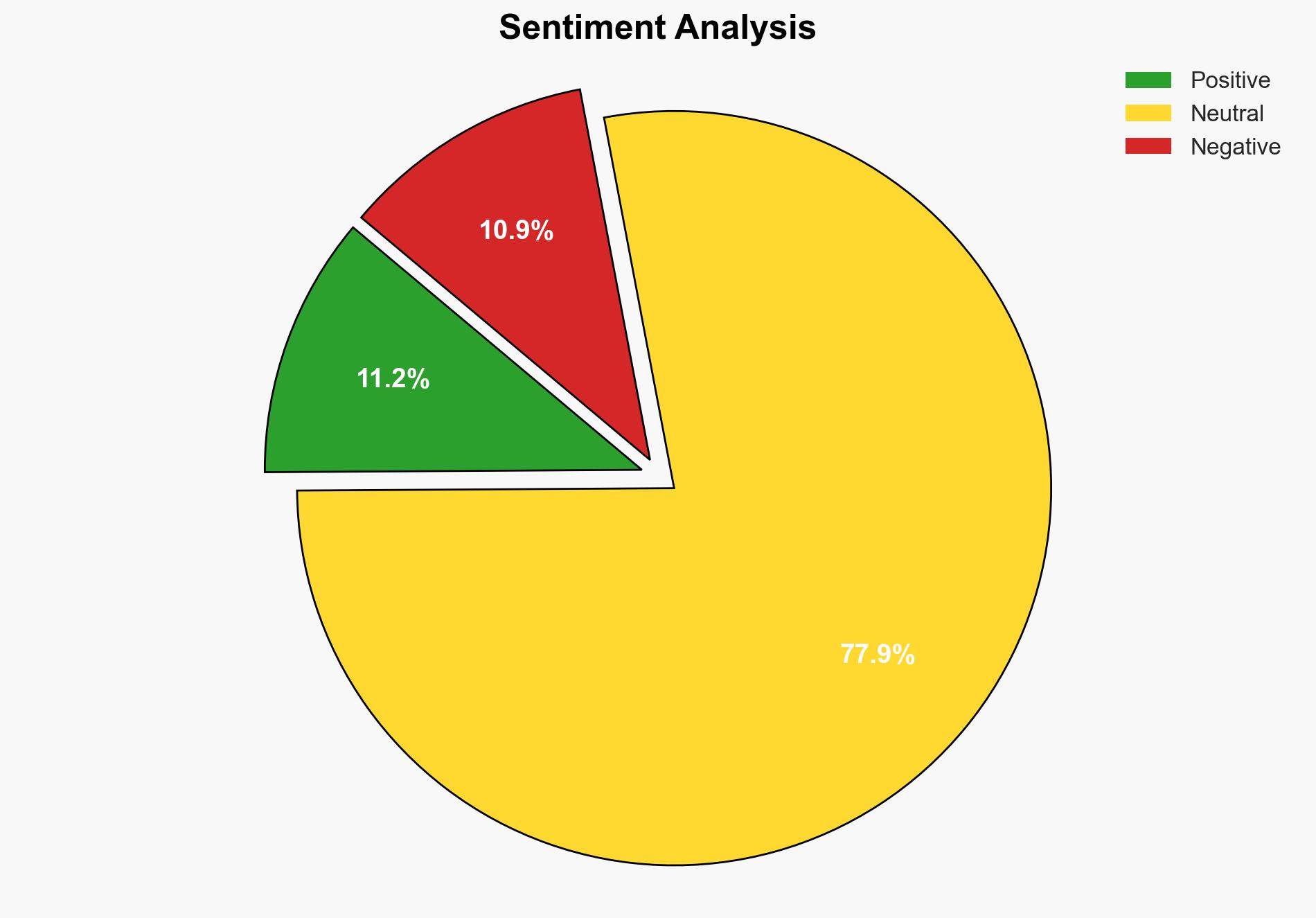Synack unveils Sara Pentest to accelerate scalable AI-driven penetration testing – Help Net Security
Published on: 2025-11-17
AI-powered OSINT brief from verified open sources. Automated NLP signal extraction with human verification. See our Methodology and Why WorldWideWatchers.
Intelligence Report:
1. BLUF (Bottom Line Up Front)
The introduction of Synack’s Sara Pentest represents a significant advancement in AI-driven penetration testing, potentially transforming the cybersecurity landscape by enhancing efficiency and reducing costs. The most supported hypothesis is that Synack’s innovation will lead to broader adoption of AI in cybersecurity, improving defensive capabilities against sophisticated threats. Confidence Level: Moderate. Recommended action is to monitor the integration and performance of AI in cybersecurity operations and assess its impact on threat landscapes.
2. Competing Hypotheses
Hypothesis 1: Synack’s Sara Pentest will significantly enhance cybersecurity operations by automating penetration testing, leading to faster vulnerability detection and remediation.
Hypothesis 2: The introduction of AI-driven penetration testing may face resistance due to potential reliability concerns and the need for human oversight, limiting its immediate impact.
Hypothesis 1 is more likely due to the increasing complexity of cyber threats and the need for scalable solutions, as well as the potential cost savings and efficiency improvements offered by AI.
3. Key Assumptions and Red Flags
Assumptions: It is assumed that AI-driven tools can accurately emulate human tester behavior and that organizations will adopt these tools without significant resistance.
Red Flags: Potential over-reliance on AI without adequate human oversight could lead to missed vulnerabilities or false positives. Additionally, the effectiveness of AI in handling zero-day vulnerabilities remains uncertain.
4. Implications and Strategic Risks
The adoption of AI-driven penetration testing could lead to a shift in the cybersecurity industry, with increased competition among vendors to offer similar solutions. This may result in a rapid evolution of cybersecurity tools and methodologies. However, there is a risk that adversaries could also leverage AI to enhance their offensive capabilities, leading to an escalation in the cyber arms race.
5. Recommendations and Outlook
- Organizations should conduct thorough evaluations of AI-driven tools to ensure they complement existing security measures and do not introduce new vulnerabilities.
- Invest in training for cybersecurity personnel to effectively integrate AI tools into their operations.
- Best-case scenario: AI-driven penetration testing becomes a standard practice, significantly improving cybersecurity resilience.
- Worst-case scenario: Over-reliance on AI leads to critical security oversights, resulting in significant breaches.
- Most-likely scenario: Gradual adoption of AI tools, with a balanced approach between automation and human oversight, enhances cybersecurity operations.
6. Key Individuals and Entities
Dr. Mark Kuhr, CTO of Synack
7. Thematic Tags
Cybersecurity, AI, Penetration Testing, Automation, Synack
Structured Analytic Techniques Applied
- Adversarial Threat Simulation: Model and simulate actions of cyber adversaries to anticipate vulnerabilities and improve resilience.
- Indicators Development: Detect and monitor behavioral or technical anomalies across systems for early threat detection.
- Bayesian Scenario Modeling: Quantify uncertainty and predict cyberattack pathways using probabilistic inference.
Explore more:
Cybersecurity Briefs ·
Daily Summary ·
Support us
·





